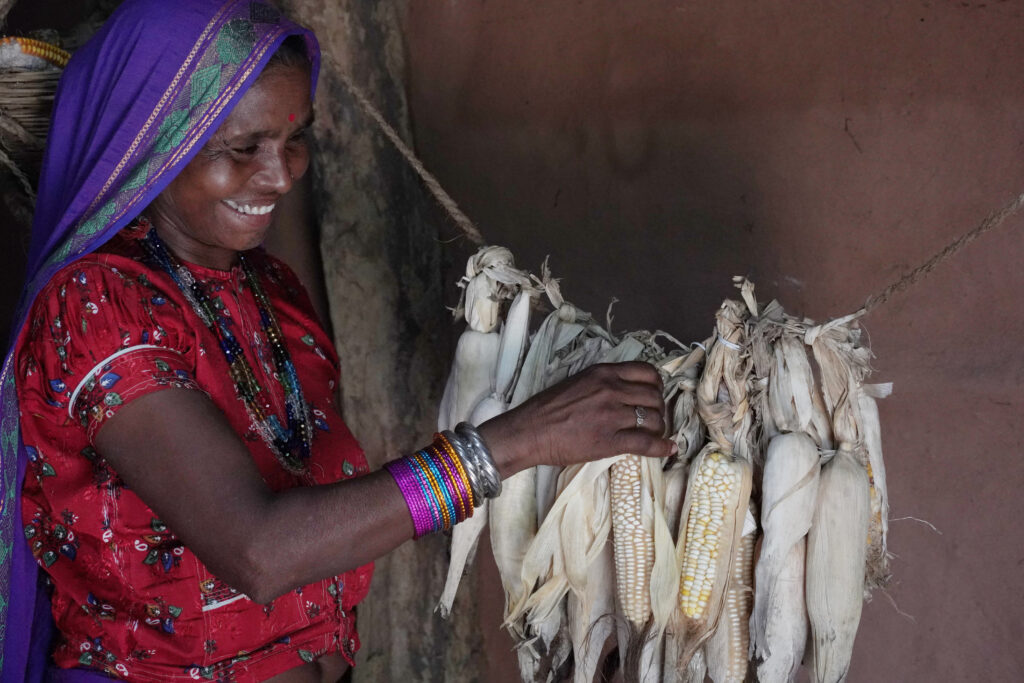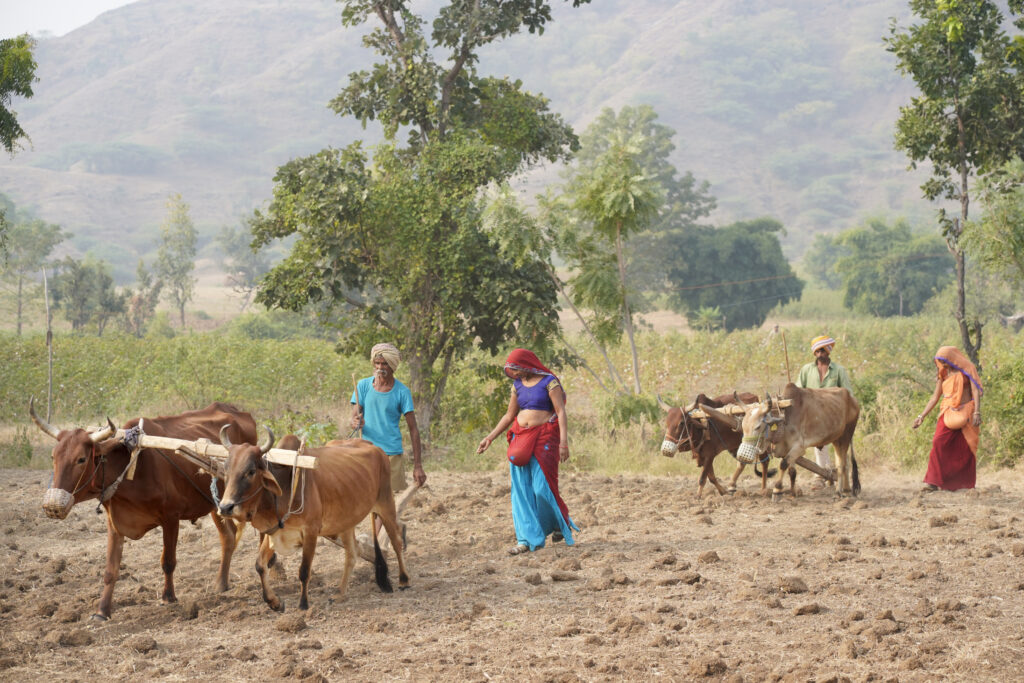The work of the organisation has led to much better implementation of the Forest Rights Act (FRA), the Mahatma Gandhi National Rural Employment Guarantee Scheme (MGNREGS) and The Right to Education Act (RTEA), than would have been possible otherwise. This has provided crucial empirical support for these three legislations which are being implemented very poorly by the Government. Moreover, the huge participation of women in the campaigns of the organisation and in the Panchayati Raj institutions has meant that the public policy of reservation for women in panchayat elections has gained tremendous support from the work of the organisation. The organisation also effectively uses the provisions of the Right to Information Act to force information out of the normally secretive administration and also make the latter act on legal demands being made by it. The organisation has also on several occasions filed cases in the courts to get justice for the Adivasis and has had two very important victories in the Supreme Court of India – The right of undertrials not to be handcuffed (https://indiankanoon.org/doc/1488068/) and compensation for Adivasi victims of silicosis due to working in stone crusher units (https://www.downtoearth.org.in/health/sc-orders-compensation-for-silicosis-patients-53852).
Thus, overall the organisation seeks to strengthen grassroots democracy for natural resource conservation and livelihood enhancement which has to be the basic thrust of a rights and needs based development policy for the country. The United Nations programme for achieving the Sustainable Development Goals globally and in India has also been facilitated by the work of the organisation. Especially the goals relating to reduction of poverty and hunger, ensuring environmental sustainability, achieving universal education and gender equality.
The most important policy impact in the present context is in establishing the viability of communitarian natural resource management by Adivasis as one of the best methods of climate change mitigation. In fact the organisation is campaigning for resource transfer to the Adivasi communities for their exemplary contribution to natural resource conservation under such facilities as the United Nations Collaborative Programme on Reducing Emissions from Deforestation and Forest Degradation.The organisation Mahila Jagat Lihaaz Samiti (MAJLIS) is a local NGO associated with the Khedut Mazdoor Chetna Sangath (KMCS), which is a totally membership based Bhil Adivasi organisation, Kansari nu Vadavno (KnV) which is a Bhil women’s rights organisation and the Adivasi Ekta Parishad which is a broad forum of Adivasi mass organisations in Western India. These organisations work by developing partnerships. The most important partnership is that with the people of the area who put in a considerable amount of voluntary work to implement the campaigns of the organisations and also contribute in cash and kind to various programmes. The district administration has fully cooperated with the campaign to implement the MGNREGS, FRA and RTEA, whenever pressure has been put on it from the people. This is crucial because people’s campaigns tend to flag after some time if results are not visible. The immediate response from the administration to complaints of mal functioning yields results and keeps the campaign alive. Various NGOs and people’s organisations at the provincial, national and international levels participate along with MAJLIS, KMCS, KnV and the AEP in larger advocacy campaigns without which it is not possible to sustain this work for a long time.
Sustainability is an important issue and the organisation has been concerned with this right from the beginning. There are two aspects of sustainability – economic and political. The economic sustainability involves the garnering of funds from the local people to carry on the organisational work. The main problem with the Bhil Adivasis is that they are economically deprived and so cannot make monetary contributions of a high order. So, while the members of the KMCS and KnV have contributed their time and agricultural produce, monetary contributions have been low. As the work progressed the costs of travel and fighting legal cases increased and these could not be met by the Adivasis. Moreover, the personal expenses of the full time activists also increased as they began raising families and these too had to be arranged. At this stage a debate ensued within the organisation and the upshot of it was that there are some functions that cannot be funded totally by the Adivasis and these have to be cross subsidised by the rich from outside.

It is universally acknowledged that education has to be funded from public funds at all levels from the primary to higher. While at the primary level education should be completely free there have to be scholarships for the economically deprived at the higher levels. Similarly full time activism for the rights of the poor has to be subsidised to a greater or lesser extent. That is why MAJLIS was formed to access funds from institutional funders and through crowd funding. Even though initially the experience was not very good, later the ropes of running an NGO were learnt and at present MAJLIS is able to access the minimal funds required for its programmes, legal action, travel and full timers’ salaries quite easily. But it has been decided to access only as much funds as required for expenses that cannot be met from the contribution of the members. This ensures that the activists are always on their toes and working efficiently as otherwise the external fund flow will stop. The more important aspect is that of political sustainability in the face of the prevalent corrupt mainstream political culture. The KMCS addresses this by holding political workshops for the youth and village activists so that a second line is always available to back up the full timers. Moreover, the KMCS also runs a residential school for children so as to produce better educated and committed Adivasi youth than the government schools which are mostly non-functional.
The most crucial thrust of the KMCS is in reviving the traditional communitarian culture of cooperation of the Bhil Adivasis. This had begun to decay because of the spread of the martket economy and competitive electoral politics. However, the KMCS has reconstituted the hamlet level committees and these hold meetings regularly to decide on various courses of action. This lively grassroots mobilisation and cooperation is at the root of the vibrancy that is displayed in the working of the KMCS.
Finally, there is a larger mobilisation of Adivasis who are employed in government jobs and in businesses so as to strengthen the Bhil Adivasi identity and create a political environment in which radicalism and the fight for justice can thrive. The most inspiring achievement in this regard is the campaign to establish that the main Bhil festival of Bhagoria is not a love fest as publicised by the media and the non-tribespeople but a celebration of the bounties of nature. The KMCS has conducted a counter campaign to show that the elopement of young couples during the Bhagoria festival is only a marginal activity that has been perversely projected by the media while down playing the fact that the festival is actually an expression of joy by the Adivasis for the rich support they get for their livelihoods from nature.
Traditionally, the Adivasis lived in small communities which were largely excluded from contact with trade except for some items like salt and cloth. Thus, they developed a system of cooperation wherein they pooled resources to live their lives. The members used to give interest free monetary advances to each other to tide over exigencies. They also had customs that ensured that surpluses that were individually accumulated would be distributed among the community through celebration and feasting. In this way they were able to continue for centuries living at a subsistence level. There was no market economy in the modern sense of the term and so no question of economic viability as costs and surpluses were shared.
However, currently the situation is very different because the Bhil Adivasis live in a complex market economy that is global in its spread. Since this economy is not a steady state subsistence one like the one that was followed earlier by the Adivasis but is surplus driven and growth oriented, there is pressure on the Adivasis also to be economically viable in their livelihood arrangements. But the drive for surpluses by the powerful players of the modern economy has led to the natural resource base of the Adivasis being taken away from them at a pittance without accounting for the social and environmental costs involved in this decimation of forests. This has not only shattered the subsistence economy of the Adivasis but has also rendered them helpless to effectively participate in the modern economy in which they are present mostly as debt ridden households.

Modern communitarian organisation under the aegis of the Khedut Mazdoor Chetna Sangath attempts to revive the natural resource base and sustainable agriculture while at the same time increase the collective bargaining power of the Adivasis in the market economy. This organisation also helps the Adivasis to access better, the various development services that the Indian State provides as part of its welfare obligations as a liberal democratic state charged with the responsibility of ensuring transfer of resources from the privileged to the needy. It is true that given the forces of economic marginalisation, the Adivasis are not able to wholly meet the economic costs of the organisation process and so some external funds have to be accessed for meeting the livelihood expenses of the full time activists, whose work is crucial to the sustainability of the organisation.
However, even if this communitarian effort is not viable in standard market economic terms in the sense that the costs of the services provided are not being wholly met by the beneficiaries, the immense social and environmental benefits accruing to society from these efforts of the organisation as a whole, hugely exceed the minimal costs that are being borne from external funds. In fact the organisations Khedut Mazdoor Chetna Sangath, Kansari nu Vadavno and Mahila Jagat Lihaaz Samiti have gained considerable credibility in effectively leveraging external grant funds for achieving immense social and environmental benefits for society in general and the Bhil Adivasis in particular. The KMCS has sustained itself for forty years now because of its wide and active mass base and extensive external support and it will continue to do so in future given the fact that its modus operandi has now become quite well established.

